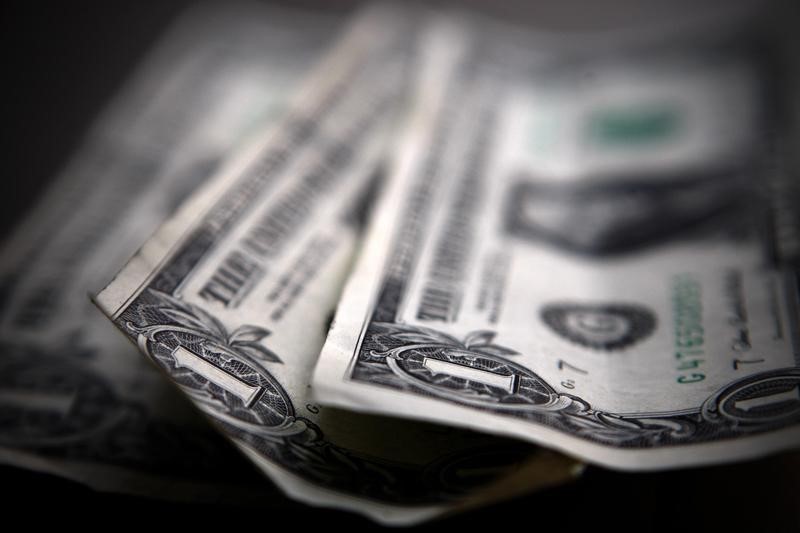By Peter Nurse
Investing.com - The U.S. dollar edged lower Monday, weakening especially against the Japanese yen as the market reassessed the Federal Reserve’s tightening path.
At 03:15 AM ET (0715 GMT), the Dollar Index, which tracks the greenback against a basket of six other currencies, traded 0.2% lower to 105.535, after falling as low as 105.490, a level not seen since July 5.
Data released Friday offered a mixed inflation picture, with the personal consumption expenditures price index showing the fastest inflation since 2005 while the final University of Michigan report showed slipping consumer inflation expectations.
However, the very weak second quarter U.S. GDP release has created the impression that the Federal Reserve has now done the majority of its tightening, with the economy starting to feel the effects of the sharp rise in interest rates.
The big economic focus for this week will be the monthly U.S. jobs report on Friday, with 250,000 jobs expected to have been created in July, a drop from the 372,000 added the previous month.
Investors should expect in the coming weeks “an elevated sensitivity of rate expectations and the dollar to incoming data points,” said analysts at ING, in a note. “In our view, this means that dollar-crosses volatility is unlikely to abate in the near term.”
USD/JPY fell 0.8% to 132.12, just above the fresh six-week low seen earlier in the session, with the Japanese yen the prime beneficiary of the lower U.S. interest rate expectations. These have led to a drop in Treasury yields, narrowing the yield gap that had opened up between the U.S. and Japan that helped drive the USD/JPY pair to a 24-year high.
Elsewhere, EUR/USD rose 0.1% to 1.0230, benefiting from the dollar weakness, but gains are tenuous after German retail sales suffered their sharpest annual fall in decades in June.
Sales in the Eurozone’s largest economy fell by 8.8% from a year earlier, the largest since Destatis started compiling pan-German retail sales data in 1994, while in month-on-month terms, they fell 1.6%, as rampant inflation ate into consumers’ spending power.
GBP/USD rose 0.2% to 1.2195 ahead of Thursday’s Bank of England meeting, at which expectations are growing that the policymakers will agree to a half-point rate hike to combat soaring inflation.
AUD/USD rose 0.4% to 0.7010, after touching a six-week high of 0.7032 in the previous session with the Reserve Bank of Australia expected to deliver another half-point increase on Tuesday.
USD/CNY rose 0.1% to 6.7533 after a private poll by Caixin on Monday showed manufacturing activity grew more slowly than expected in July, while the official survey on Sunday indicated the sector actually contracted last month.
